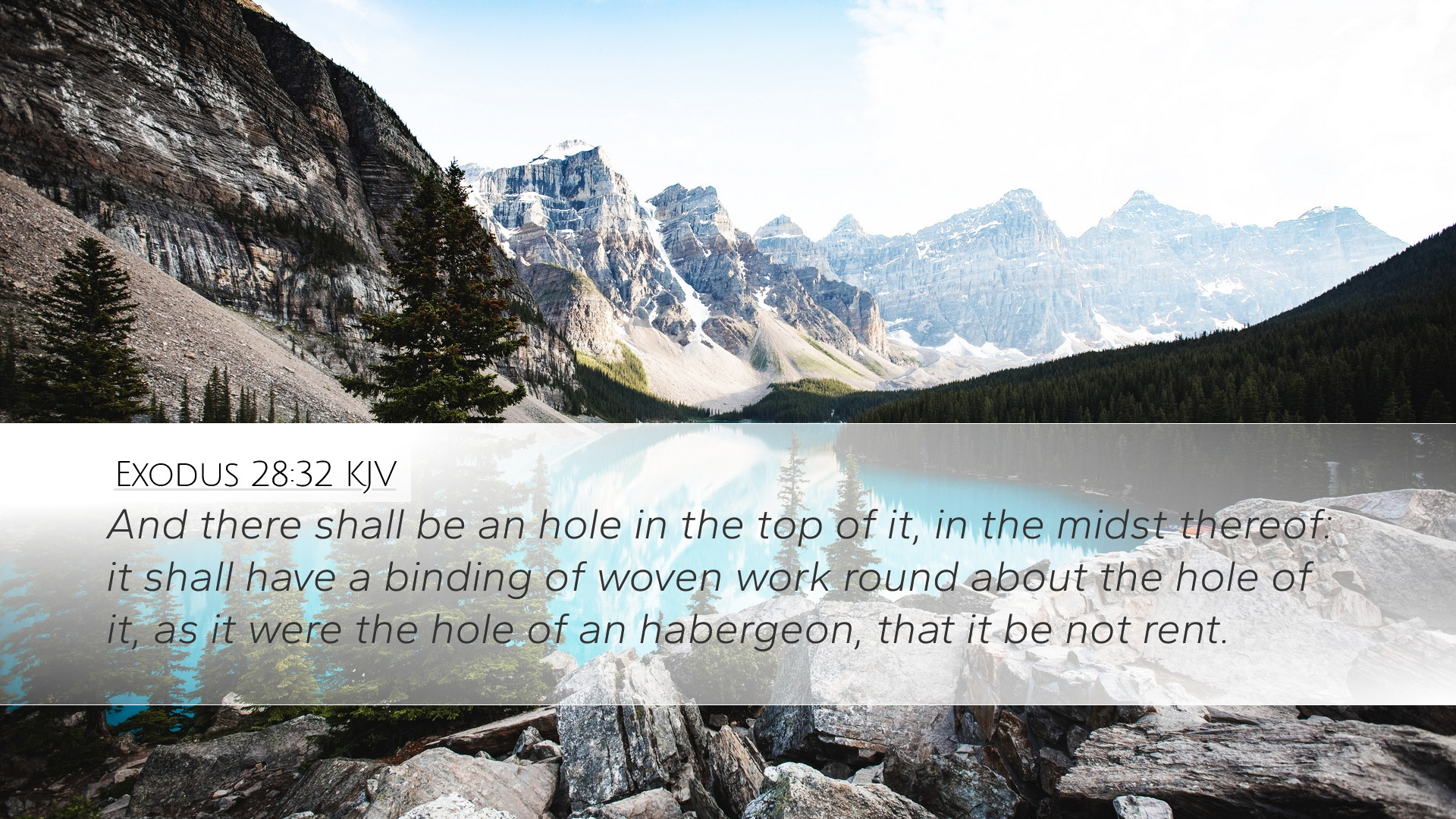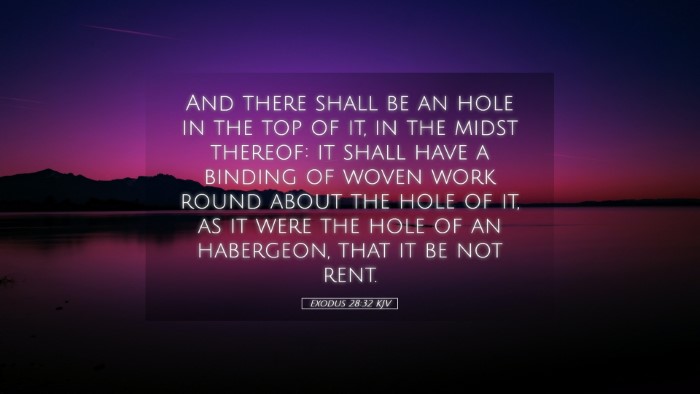Exodus 28:32 Commentary
Verse Exegesis: Exodus 28:32 states, “And there shall be an opening for his head in the middle of it; it shall have a woven binding all around its opening, like the opening in a coat of mail, so that it does not tear.” This verse is part of the instructions for the garments of the high priest, specifically the robe of the ephod.
Historical Context
The garments described in Exodus 28 were designed for the high priest, who served as a mediator between God and the Israelites. The high priest's attire was symbolically rich, encompassing elements that pointed to holiness, authority, and the presence of God among His people. The robe's construction reflects the careful attention that God commanded regarding the worship and approach to Him.
Structural Analysis
- Opening for His Head: The mention of an opening for the head signifies functionality and practical design, ensuring that the garment is wearable and serves its purpose effectively.
- Woven Binding: The woven binding around the opening serves not only as a decorative element but also provides durability, indicating God's desire for His ministers to be well-equipped and prepared for service.
- Comparison to a Coat of Mail: The reference to a coat of mail brings to mind notions of protection and strength, suggesting that the high priest is fortified in his duties before God and the people.
Theological Reflections
This verse can be understood in several theological dimensions:
- Symbolism of the High Priest: The high priest embodies the mediator role between God and humanity, prefiguring Christ's ultimate work as our High Priest (Hebrews 4:14-16).
- Call to Holiness: The intricate details and the requirement for the garment’s construction signify God’s desire for holiness in worship and leadership.
- Attention to Detail: The detailed instructions reflect God’s sovereignty and intentionality, highlighting the importance of sacred spaces and the decorum required in approaching the Divine.
Commentaries Insights
Matthew Henry
Matthew Henry underscores the significance of the high priest's attire, emphasizing that every detail was directed by divine revelation. He points out that the physical aspects of the garments serve to remind believers of the seriousness of approaching God. Henry notes the protective nature of the priest's garments as indicative of spiritual covering, enabling the high priest to intercede on behalf of the people without fear of divine retribution.
Albert Barnes
Albert Barnes elaborates on the implications of the robe’s design. He highlights that the woven binding serves to maintain the integrity of the garment, metaphorically suggesting that God's calling upon leaders carries the same expectation of maintaining integrity and strength in service. Barnes relates that just as the high priest wore these garments as part of his holy duties, modern believers are called to wear spiritual armor, as depicted in Ephesians 6.
Adam Clarke
Adam Clarke offers a detailed discussion on the practicalities and symbolism involved in the high priest’s garments. He posits that the head opening’s design prevents tearing, which Clarke sees as an analogy to the eternal covenant God has established. The durability reflects God's unbreakable promises, and the high priest's faithful execution of his duties is essential. Clarke also points out that such specifics are intended to instill reverence among the congregation for the sacredness of the priestly role.
Practical Applications
From a pastoral perspective, Exodus 28:32 can be a source of rich material for sermons and teaching:
- Role of the Pastor: Just as the high priest had specific attire, pastors today must embrace their calling with a sense of sacred responsibility and integrity.
- Holiness in Worship: The verse can prompt discussions about preparation and the attitudes required within church settings, encouraging congregants to approach God with reverence.
- A Call to Intercession: Believers are reminded of their role as intercessors, following the model of the high priest in standing in the gap for others, reflecting Christ's intercessory work.
Conclusion
Exodus 28:32 encapsulates essential themes regarding the preparation, holiness, and integrity required in worship and service. By reflecting on the insights of respected commentators such as Matthew Henry, Albert Barnes, and Adam Clarke, contemporary believers can draw deeper theological implications and practical applications from this verse. The high priest's garments serve as a poignant reminder of the call to holiness in our interactions with God and our responsibilities toward others.


